In an age when home is both sanctuary and status symbol, the decision to hire an interior designer is less about indulgence and more about strategy. Whether you’re orchestrating a full-scale renovation or upgrading a single room, the right professional can make all the difference—guiding not just aesthetics, but budgets, timelines, and the hidden headaches behind those Pinterest-perfect spaces.
After connecting with Sweeten’s top design experts—Joy, Maneli, and Jill—I finally found the answer to a question I’ve been carrying for years:
What does it really cost to hire an interior designer?
Featuring a renovated condo in Tribeca, NYC: A Young Family’s Minimalist Haven in a Century Old Tribeca Building
Understanding the Costs
- Hourly Rate: $100–$200/hour (can reach up to $500/hour for high-end designers)
- Flat Fee: $2,000–$12,000+ depending on scope
- Per Square Foot: $5–$15/sq ft; plan for ~$10/sq ft for full-service gut renovations
- Commission/Markup: 10%–40% on purchases and furnishings
Interior design pricing today offers a range of structures to fit different project sizes and needs. On average, designers charge between $100 to $200 per hour, with high-end firms commanding up to $500 per hour. For full-service projects, you may encounter flat fees ranging from $2,000 to $12,000 or a commission-based model, where designers take 10% to 40% of the merchandise costs.
At Sweeten, we’re experts at all things general contractors. Here’s how Sweeten works: We pre-screen them for our network, carefully select the best ones for your remodeling project, and work closely with hundreds of general contractors every day.
Another common pricing method is per square foot, with rates typically falling between $5 and $15 per square foot—closer to $10/sq ft for gut renovations with comprehensive design services. For a full room refresh, including design services and furnishings, expect to budget $15,000 to $25,000, depending on your materials, timeline, and goals. Smaller-scale consultations or design plans can start at around $75/hour, while DIY-friendly services like mood boards or sourcing guides might be offered as flat packages.
These options give homeowners flexibility—but also highlight how essential it is to have a clear understanding of your goals and budget from the outset.
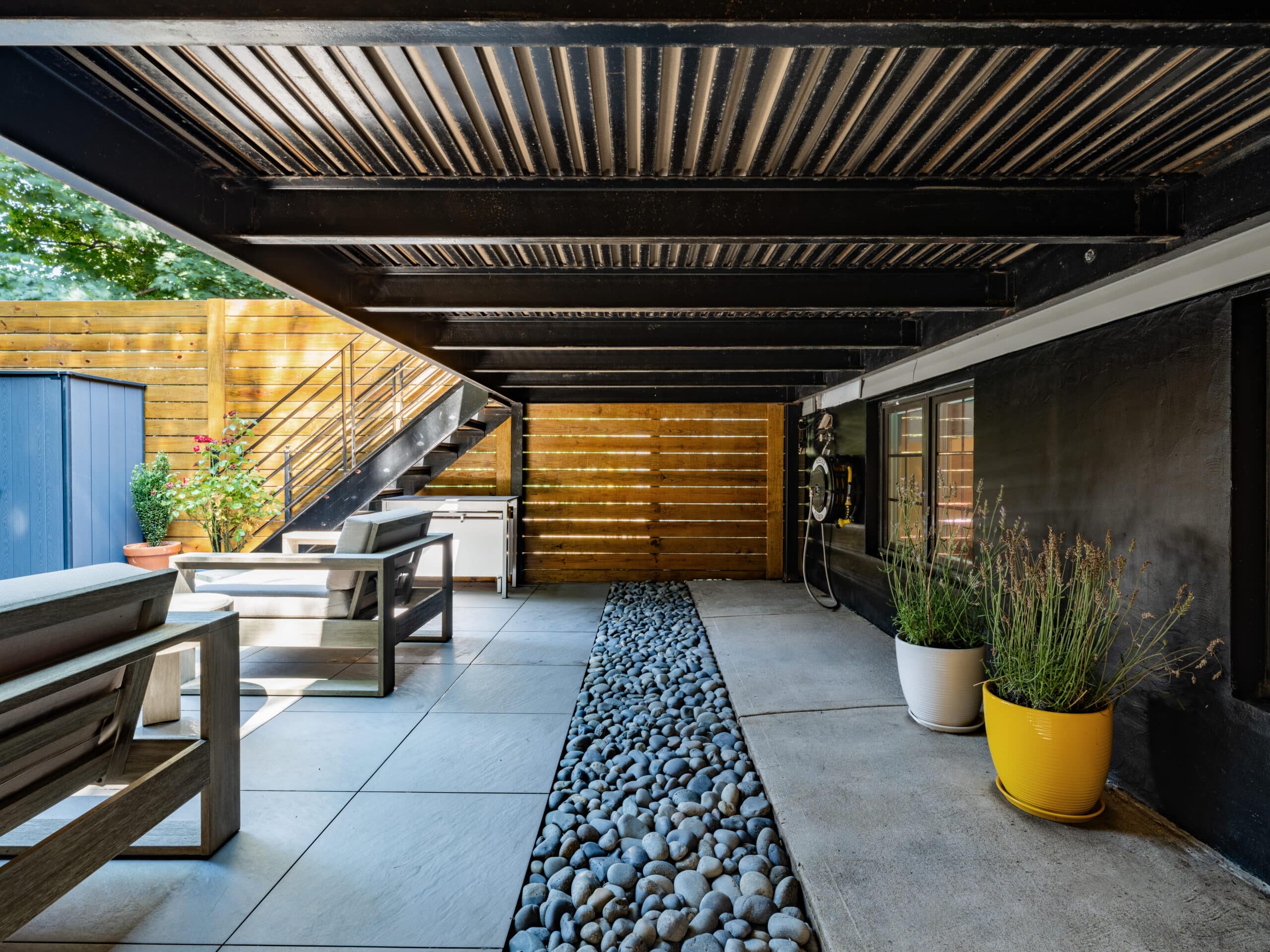
Featuring a renovated backyard in Brooklyn: Redefining Outdoor Spaces: A Brooklyn Homeowner’s Backyard Transformation Tale
Size, Timeline, and Scope
If you’ve read our guides on bathroom or kitchen renovations, you know that certain projects require technical upgrades no matter your aesthetic goals. With interior design, however, your spending tends to go toward highly visible results—which makes it easier to control budget and maximize impact.
Room-Specific Estimates
Living room:
- $2,500–$5,000 for design services
- $15,000–$25,000 for total furnishings and finished
Bedroom:
- $1,000–$2,000 for design services
- $20,000–$40,000 for full primary bedroom setup
Kitchen:
- $500–$10,000 for design services
- $2,500–$3,500 is a typical mid-range design budget
Renovate to live, Sweeten to thrive!
Sweeten brings homeowners an exceptional renovation experience by personally matching trusted general contractors to your project, while offering expert guidance and support—at no cost to you.
Old Hollywood Glamour Meets Mid-Century Modern in the Hollywood Hills
Post your project on Sweeten for free and make your dream renovation a reality. Sweeten simplifies home renovation by connecting homeowners with top-rated general contractors, handling the vetting process and project management. To learn more about how we can help, check out our home renovation services.
Options for Structuring Costs
You can probably expect your interior designer to propose a few options for setting the budget:
- Flat fees for different packages of service
- Hourly fees for consultation and visits
- 20% to 35% mark-up on purchases and services (like contractor oversight), or a commission based on the cost of planned construction (if renovation work is happening)
- A mix of these options to allow for more flexibility
If you are gut-renovating and relying on your interior designer for full design services, you can expect to spend around $10 per square foot on design services alone. At this level, your interior designer is deeply involved in the project from start to finish and is sourcing, purchasing, and ensuring the delivery and installation of every visible aspect of your home. If you are gut-renovating a 1,000 square foot property, you can expect to pay $10,000 on design services, separate and apart from the cost of materials. If the scope of your project involves highly specialized selections or high-end and exclusive artisan work, you can expect the design cost per square foot to rise accordingly.
If you are focused exclusively on furnishings and are not planning any renovation work, you might see a cost proposal where you pay the designer 20% to 35% of the total cost of the merchandise you purchase, or you might see a cost structure that combines a flat fee with hourly fees or commission-based fees.
At this level, your designer is providing a design vision with color and material selections, sourcing merchandise, and ensuring that pieces are delivered properly. All in, bare minimum, you might be able to do one room for $8,000 for design services and furniture, provided that you’re open to mixing thrift shop finds with national retailer-type pieces with a few select higher-end accents. With a more average budget, you can expect to spend $15,000 to $20,000 for design services and furniture selections for one room.
You might find that you can conserve costs by handling some of the purchase and delivery logistics on your own, but you should be realistic in your capacity and desire to do so. Art will arrive in the wrong frame and rugs will fall off the truck en route, so you need to be prepared for the follow-up that a designer would handle.
If you are looking for guidance with vision and finding particular items, you might decide to work with a designer on an hourly basis, which can range from $75 an hour to $250 and beyond, or you might agree to a flat fee for a “mood board” or “inspiration booklet”, where the designer provides you with layout, color, and material selections for the room but leaves the sourcing and buying to you.
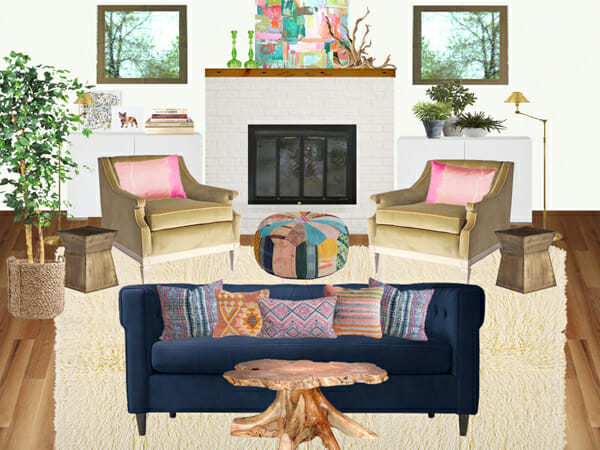
Excerpt below from a design plan by Sweeten Expert Jill
“Although I think clients find hourly fees easier to digest – and it can sound less expensive – I often find that the opposite is true. Clients often underestimate the time that goes into a project,” noted Jill. “I want to have the discretion to spend the time that may be necessary searching for the perfect piece without worrying about billing my client hundreds of dollars.”
Savings and Access
As you think about these potential upfront costs, you also have to consider two major benefits to working with an interior designer that might not be immediately obvious. My own personal “A Ha!” moment came when I realized that interior designers can tap into two of my most favorite life-long quests: hidden savings and access!
Because of to-the-trade discounts and insider access to industry sales, an interior designer can save you up to 40% of the cost that you might otherwise pay for materials and furnishings. Joy cracked me up: “I take on the aspect of saving clients money like a game show participant! I go hard as though I’ve got to throw my hand on a buzzer!” So while you may be calculating the costs of working with a designer, the experts I talked with more than made up for those costs with savings that would be out of reach for most homeowners.
In addition to the value saved, an interior designer can get you access to items that you wouldn’t be able to get on your own, and can mix high-brow and budget items seamlessly, so that you are spending money on things that matter most to you. An interior designer will be able to get a custom piece that you will never see at a national retailer, and mix that splurge with vintage picks, or restore an antique or thrift shop find with a unique fabric to create a custom piece at a fraction of the cost.
Jill warned that we should “be prepared for the price tag that to-the-trade and custom items have, even after a designer discount. There is value in beautiful, quality made items and I love to support the people making this work. However, I try to provide all of my clients with some special and unique pieces, no matter what their budget is.”
More Wise Words from these Wise Ladies
Joy, Maneli, and Jill each shared super insightful guidance to keep in mind if you are planning a design upgrade. Jill offered savvy guidance for homeowners who are feeling unsure about their financial ability to replace an entire room of furniture at once, “work with a professional to create a design plan that can be executed over time as funds become available.” She also recommends not to forget about accessories, the “final layer” that can really make a house your home. “Arrange a vignette of interesting or meaningful items, hang some art and bring in some greenery – a large plant can really add life and sculptural interest to a room.”
Joy highlighted the key role that timeline can play in a budget. If you have time for your designer to find the right pieces and pay for standard shipping, you will get the look you want without paying a premium to rush orders. Lead times for custom pieces and shipping fees can balloon if you are on a deadline.
Maneli suggested that homeowners planning extensive renovation and design work should think about their budget in two buckets: one budget for the materials that will come with them when they move (furniture, art, drapery, etc.) and one budget for the materials that will stay with the house and add to its re-sale value (permanent features like lighting fixtures, wall treatments, custom millwork, etc.). By grouping expenditures that way, you can decide what to allocate for things you will keep for decades, and what you will invest in the value of your home.
Ready to Start your Renovation Journey?
Post your project on Sweeten for free and make your dream home a reality. Sweeten puts you in control of your renovation, from finding the perfect contractor and gathering design inspiration, to using cost guides to plan your budget wisely.
View the original article and our Inspiration here

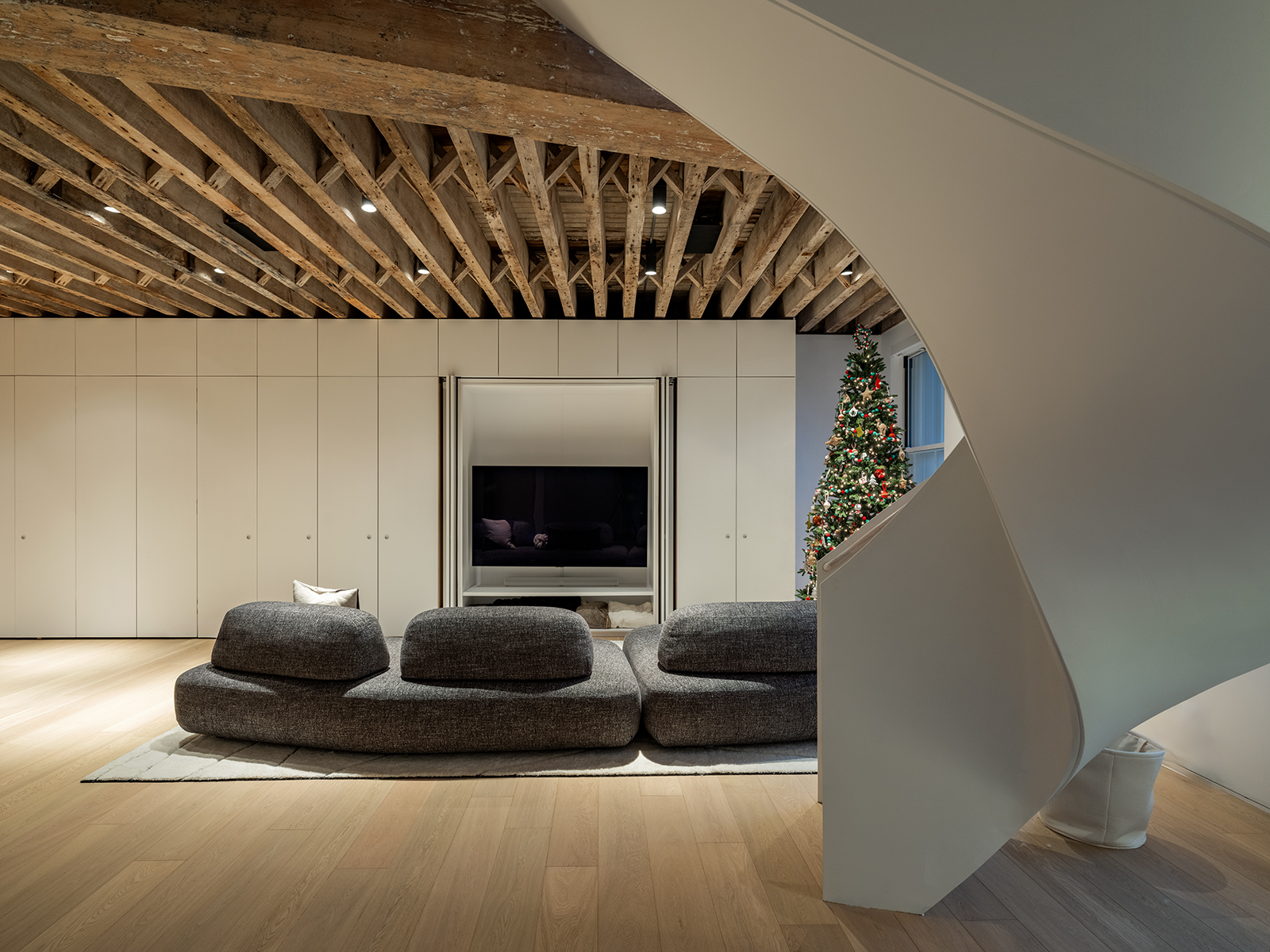
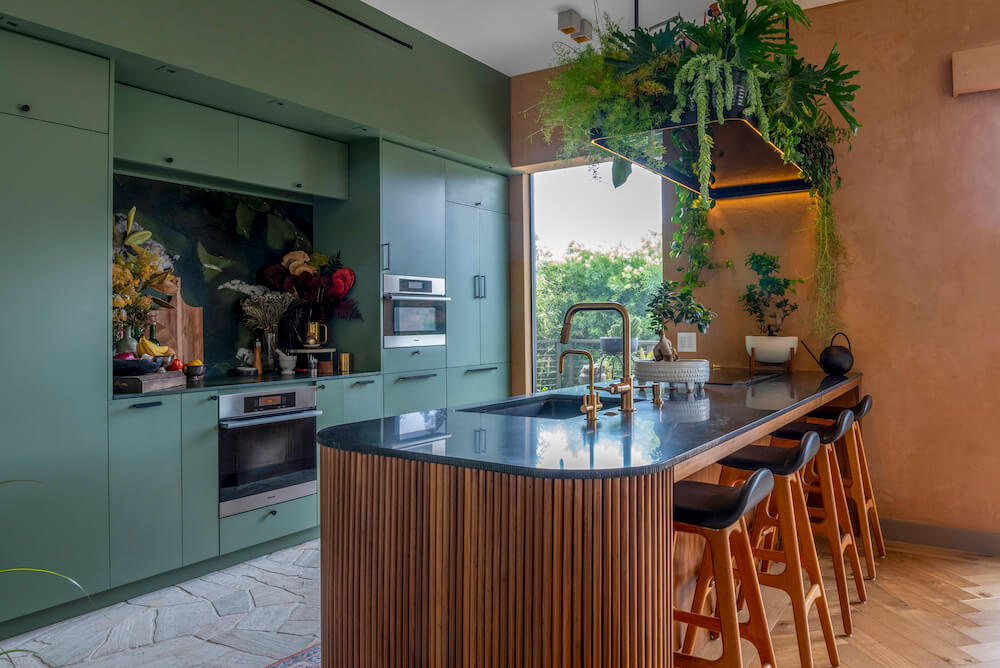
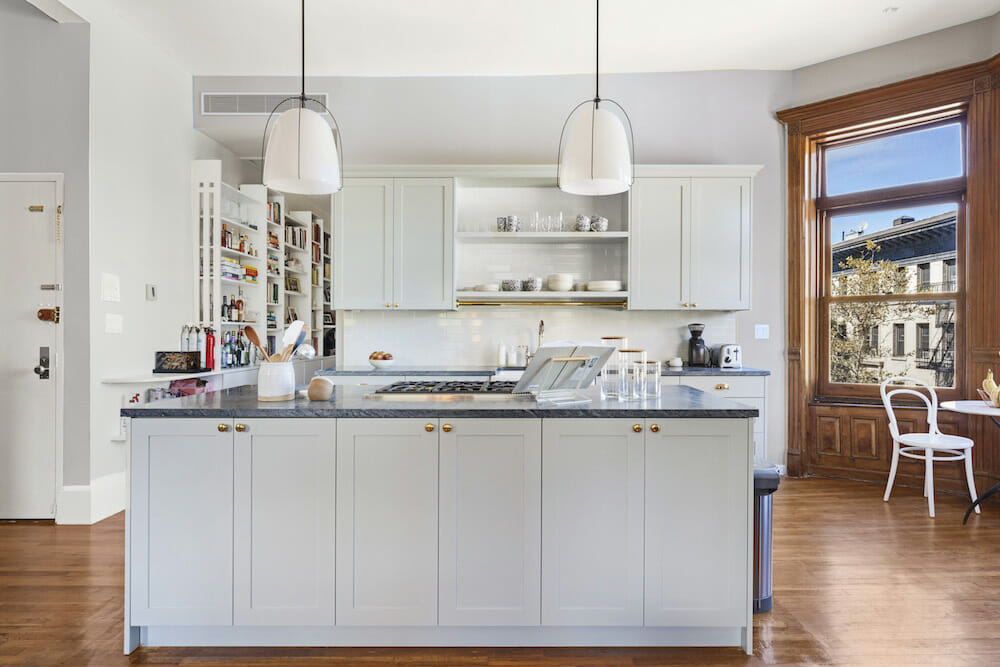

Leave a Reply